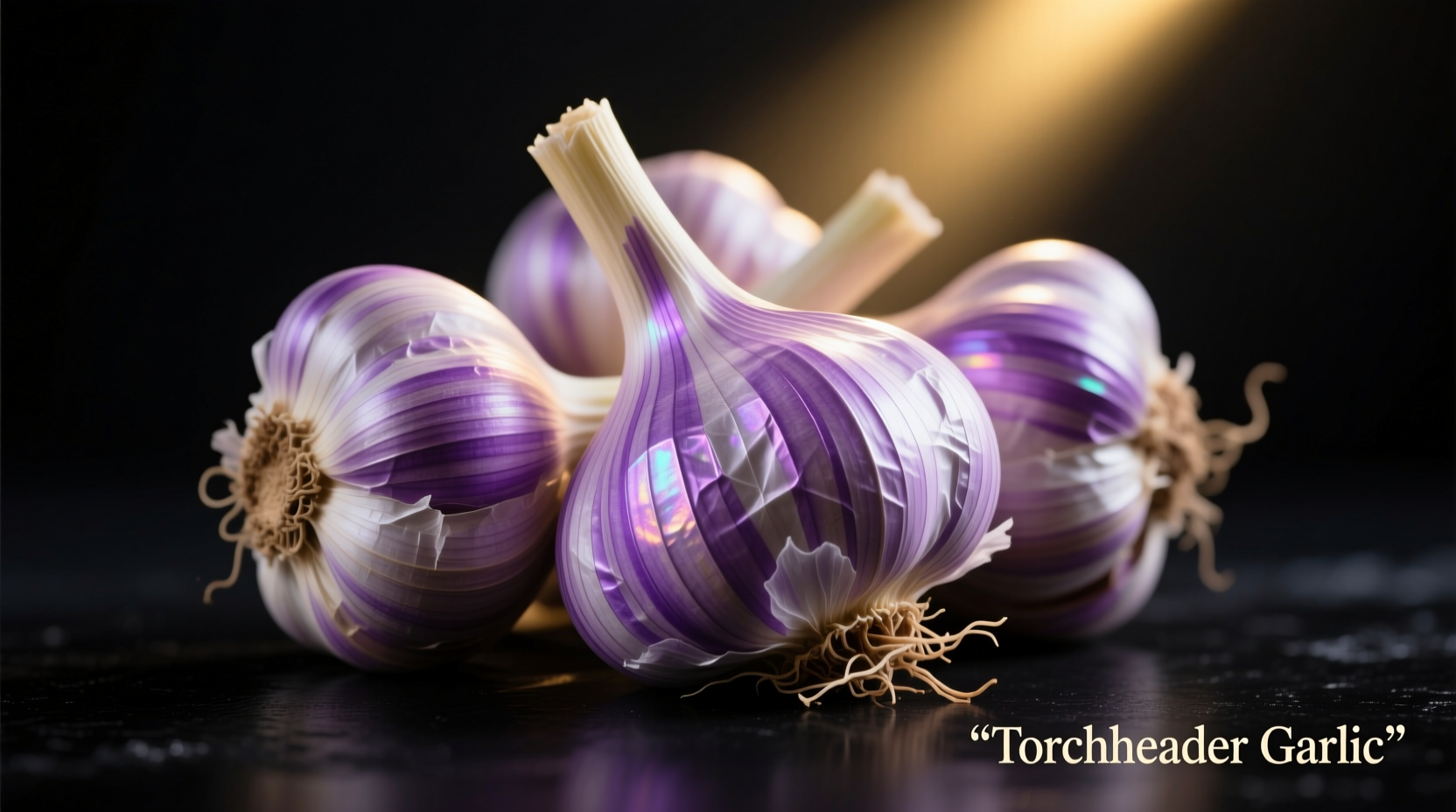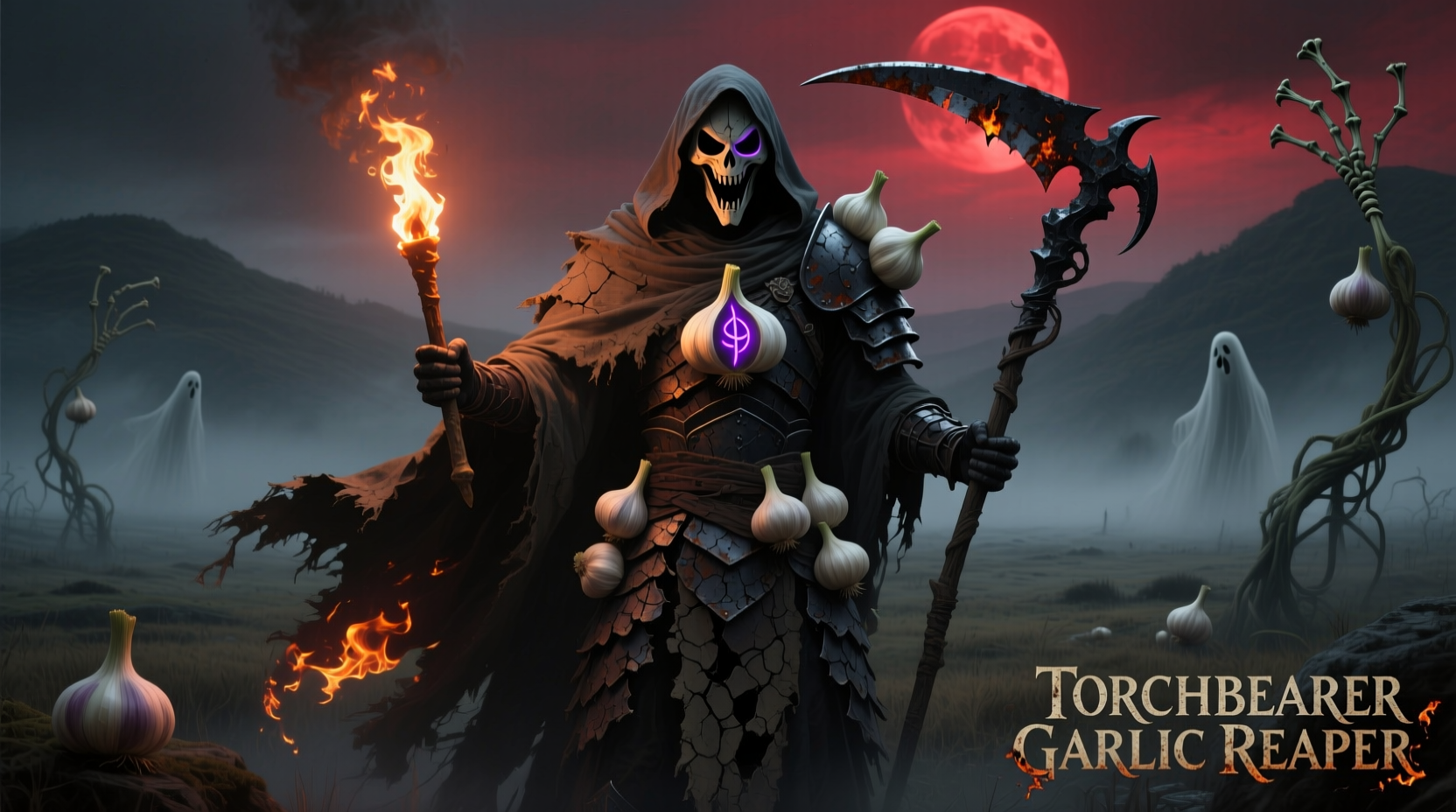Many gardeners and cooks searching for torchbearer garlic reaper encounter confusion because these terms belong to entirely separate plant species. Let's clarify this common misconception and provide accurate information about both plants to help you make informed decisions for your garden or kitchen.
Understanding the Torchbearer Garlic Variety
Torchbearer garlic (Allium sativum var. ophioscorodon) is a prized hardneck garlic cultivar developed for its exceptional cold tolerance and complex flavor profile. Unlike the misleading "reaper" association, Torchbearer has no connection to chili peppers. This variety emerged from selective breeding programs in the Pacific Northwest during the 1990s, specifically designed for northern climates where softneck varieties struggle.
Gardeners choose Torchbearer for its reliable performance in cold zones (3-7) and its distinctive characteristics:
- Produces 4-6 large, easy-to-peel cloves per bulb
- Develops beautiful purple-striped wrappers
- Offers a balanced flavor profile - robust when raw, mellowing to sweet and nutty when roasted
- Stores well for 6-7 months under proper conditions
Why the "Reaper" Confusion Happens
The term "reaper" in torchbearer garlic reaper searches almost always refers to the Carolina Reaper chili pepper (Capsicum chinense), not a garlic variety. This confusion likely stems from:
- Misremembering or combining plant names
- Online marketplace errors where sellers incorrectly label products
- Autocomplete suggestions creating false associations
| Characteristic | Torchbearer Garlic | Carolina Reaper Chili |
|---|---|---|
| Botanical Classification | Allium sativum (onion family) | Capsicum chinense (nightshade family) |
| Heat Level | Mild to medium (500-1,500 SHU) | Extreme (1,400,000-2,200,000 SHU) |
| Primary Use | Culinary flavoring | Extreme heat applications |
| Growing Season | Fall planting, summer harvest | Spring planting, fall harvest |
Practical Guidance for Gardeners and Cooks
When searching for authentic Torchbearer garlic, look for these verification markers from reputable seed suppliers:
- Clear labeling as "Torchbearer" without "reaper" terminology
- Sold by established garlic specialty nurseries (not general seed catalogs)
- Accompanied by growing zone recommendations (zones 3-7)
- Pricing consistent with other premium hardneck varieties ($2-4 per bulb)
According to the USDA National Institute of Food and Agriculture's specialty crop guidelines, authentic garlic varieties should be certified disease-free when purchased for planting. Their specialty crop program emphasizes proper varietal identification to prevent mislabeling in agricultural markets.

When to Use Torchbearer Garlic vs. Hot Peppers
Understanding the appropriate culinary applications prevents recipe disasters. Torchbearer garlic shines in dishes where you want pronounced garlic flavor without overwhelming heat:
- Roasted vegetable medleys
- Garlic-infused olive oils (properly stored to prevent botulism)
- Traditional pesto variations
- Meat rubs and marinades
Carolina Reaper, by contrast, should be used sparingly in applications designed for extreme heat:
- Hot sauces (a single pod can flavor an entire batch)
- Specialty salsas for heat enthusiasts
- Experimental craft beers
- Medical topical pain relief preparations (under professional guidance)
The American Association of Poison Control Centers reports increasing incidents of culinary mishaps when home cooks confuse mild alliums with extreme-heat chilies. Their annual reports document numerous cases of accidental ingestion leading to emergency room visits.
Identifying Authentic Sources
To avoid purchasing mislabeled products when searching for torchbearer garlic reaper, verify these critical factors:
- Botanical accuracy - Real garlic varieties never include "reaper" in their official names
- Supplier expertise - Reputable garlic growers specialize in alliums, not chili peppers
- Product images - Authentic Torchbearer shows characteristic purple striping on bulb wrappers
- Customer reviews - Look for specific growing experience mentions, not generic comments
When in doubt, consult your local cooperative extension service. The USDA's land-grant university network provides free verification services for plant varieties through their agricultural extension programs.
Common Misconceptions Clarified
Several persistent myths surround this confusion:
- Myth: "Torchbearer Reaper" is a new hybrid variety
- Fact: No legitimate agricultural institution has developed or registered such a hybrid
- Myth: Some garlic varieties are naturally extremely hot
- Fact: Garlic's heat comes from allicin compounds, which are orders of magnitude milder than capsaicin in chilies
- Myth: Online sellers know more about niche varieties than agricultural authorities
- Fact: The USDA Agricultural Research Service maintains the definitive Allium variety database with no "reaper" garlic entries
Practical Tips for Successful Garlic Growing
If you're searching for torchbearer garlic reaper because you want to grow Torchbearer garlic, follow these evidence-based practices:
- Plant cloves in fall (4-6 weeks before first frost)
- Choose well-draining soil with pH 6.0-7.0
- Space cloves 6 inches apart, 2-3 inches deep
- Apply 3-4 inches of mulch after planting
- Remove scapes in early summer to direct energy to bulb development
- Cure harvested bulbs in a warm, dry, ventilated space for 3-4 weeks
These recommendations align with Cornell University's vegetable growing guides, which document optimal conditions for hardneck garlic varieties like Torchbearer.
Frequently Asked Questions
Is Torchbearer garlic the same as Carolina Reaper?
No, Torchbearer is a hardneck garlic variety while Carolina Reaper is a chili pepper. They belong to completely different plant families with no botanical relation. This confusion stems from mixing terminology in online searches.
Can I grow Torchbearer garlic in warm climates?
Torchbearer is a hardneck variety requiring significant cold exposure (vernalization). It performs best in USDA zones 3-7. Gardeners in warmer zones (8+) should consider softneck varieties like California Early or Inchelium Red instead.
Why do some websites list "Torchbearer Reaper" garlic?
These listings typically represent either deliberate misinformation to capitalize on search trends or accidental keyword stuffing. Reputable agricultural suppliers never use "reaper" in garlic variety names. Always verify with established garlic specialty nurseries.
How can I safely handle extremely hot peppers like Carolina Reaper?
Always wear nitrile gloves when handling super-hot peppers, avoid touching your face, work in well-ventilated areas, and wash all surfaces thoroughly afterward. The North American Herb and Spice Association recommends using food-safe gloves specifically designed for capsaicin resistance.
What's the best substitute for Torchbearer garlic if I can't find it?
Music or Chesnok Red garlic make excellent substitutes with similar flavor profiles and cold-hardiness. For milder applications, consider Spanish Roja. Always source from reputable garlic specialty suppliers rather than general grocery stores for planting stock.











 浙公网安备
33010002000092号
浙公网安备
33010002000092号 浙B2-20120091-4
浙B2-20120091-4